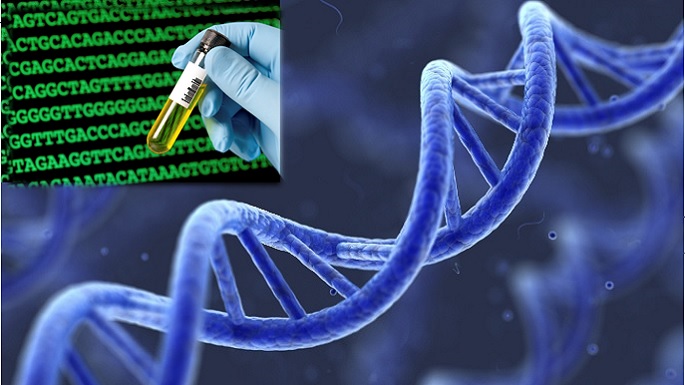It has been over 30 years since the first generation of DNA sequencing technology was developed in 1977. During this period, sequencing technology has made considerable progress. From the first generation to the third generation and even the fourth generation, sequencing technology has experienced the read length from long to short, and short to long. Although the second generation---short-read sequencing technology still dominates the current global sequencing market, the third and fourth generation of sequencing technologies are rapidly evolving over the course of the two-year period. Every transformation of sequencing technology results in a huge role in promoting genome research, disease medical research, drug development, breeding and other fields. This blog is mainly focusing on the current genome sequencing technologies and their sequencing principles.
The Development of Sequencing Technology
In 1952, Hershey and Chase completed the famous T2 phage infection of bacteria experiment, which effectively proved that DNA is a genetic material. In 1953, Crick and Watson showed their DNA model in the British magazine--Nature. After a thorough study at Cambridge University, they described DNA model with “double helix”. In 1958, Francis Crick proposed the genetic central dogma, which was reiterated in Nature in 1970. Genetic code, also known as codons, genetic codons or triple codes, determines the nucleotide sequence of the amino acid sequence in the protein, which are consist of three consecutive nucleotides. In 1966, Hola announced that the genetic code had been deciphered. In 1974, Szibalski, Polish geneticist, proposed genetic recombination technology was synthetic biology concept. DNA recombinant technology, also known as genetic engineering, aims to recombine DNA molecules in vitro, proliferating in the appropriate cells. In 1983, PCR (polymerase chain reaction) was developed by Dr. Kary B.Mullis. It is a molecular biology technique and used to amplify specific DNA fragments, which can be regarded as the special DNA replication in vitro.
In 1977, A.M. Maxam and W. Gilbert firstly established a DNA fragment sequence determination method, which is also called Maxam-Gilbert chemical degradation method. Currently, this chemical degradation method and enzymatic method (dideoxy chain termination method) proposed by Sanger are rapid sequencing techniques. In 1986, the first automated sequencer---abi prism 310 gene analyzer was developed by an American company---Pe Abi. And then Hood and Smith utilized fluorescently labeled dNTP for electrophoresis technology. Therefore, the first commercial automatic sequencer was born. After that, the capillary electrophoresis sequencer was developed in 1996 and 3700 type automated sequencer was developed in 1998.
In 2008, Quake group designed and developed HeliScope sequencer, which is also a loop chip sequencing equipment. In the same year, nanopore sequencing was developed based on the electrophoresis technology. In the next year, SMRT was developed. In 2010, ion PGM and GeXP were put into use.
In 2005, Roche company designed 454 technology--genome sequencer 20 system---an ultra high throughput genome sequencing system, which was praised as a milestone in the development of sequencing technology by Nature. In 2006, illumina sequencer was developed and it is suitable for DNA libraries prepared by various methods. In 2007, Solid System was developed.
First generation of sequencing technology
The first generation of sequencing technology is based on the chain termination method developed by Sanger and Coulson in 1975 or the chemical method (chain degradation) invented by Maxam and Gulbert during 1976 and 1977. And Sanger in 1977 judged the first genome sequence belonging to Phage X174 with the whole length of 5375 bases. Since then, human beings have aquired the ability to snoop the nature of the genetic difference of life, and also it is a beginning of the genomic era. Researchers continue to improve the Sanger method during performance. In 2001, it was based on the improved Sanger method that the first human genome map was completed. The core principle of Sanger method is that ddNTP cannot form phosphodiester bond during the synthesis of DNA, due to the lack of hydroxyl in its 2 'and 3'. So it can be used to interrupt the DNA synthesis reaction. Add a certain proportion of ddNTP with radioactive isotope label, including ddATP, ddCTP, ddGTP and ddTTP, into four DNA synthesis reaction systems respectively. After gel electrophoresis and autoradiography, the DNA sequences of the samples can be determined according to the position of the electrophoretic band.
In addition to Sanger method, it is worth noting that during the period of sequencing technology development, there are many other sequencing technologies emerging, such as pyrophosphate sequencing method, ligation enzyme method and so on. Among these, pyrophosphate sequencing method was later used by Roche company for 454 technique, while the ligation enzyme method was used for SOLID technique by ABI company. The common core method shared by both of them was to use dNTP which can interrupt DNA synthesis, similar to ddNTP in Sanger method.
All in all, the first generation of sequencing technology has the read-length ability of 1000bp with the 99.999% accuracy, which are the main feature. However, its high cost, low throughput and other disadvantages result in a serious impact on its real large-scale application. Therefore, the first generation of sequencing technology is not the most ideal sequencing method. Undergoing development and improvement, the second generation of sequencing technology was born symbolized by Roche's 454 technology, Illumina's Solexa, Hiseq technology, and ABI's Solid technology. The second generation of sequencing technology cannot only greatly reduce sequencing cost, but also dramatically increase the speed of sequencing, maintaining high accuracy. The turn-around time of the second generation sequencing technology to complete a human genome project can just be one week, while that using the first generation sequencing technology to achieve the same goal is three years. However, the read length of the second generation of sequencing technology is much shorter than that of the first generation.
In the next blog chapter, we will continue to introduce the second generation of sequencing technology.
More related information


